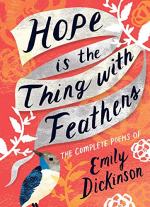|
This section contains 757 words (approx. 2 pages at 400 words per page) |

|
Point of View
The poem is written in a first-person point of view, although it really only materializes in the poem’s final stanza, when the speaker says “I’ve heard it in the chillest land –” (9). Previously, reading the first two stanzas of the poem, the reader is seduced into believing that the voice is an omniscient third-person one. The concepts described are general and abstract, and the use of the definite article — as in “the soul” (2) — seem to imply that the poem is not referring to any individual in particular, but is instead concerned with the human condition.
The poem also mentions in passing a collective group of other people in the line “That kept so many warm –” (8). The use of the intensifier “so” in “so many” emphasizes the number of people who have been kept warm by the bird’s song, and further foreshadows and throws...
|
This section contains 757 words (approx. 2 pages at 400 words per page) |

|




